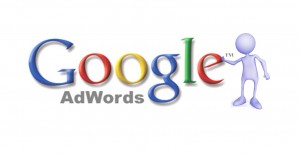How to get the most out of your Google Adwords campaigns
I regularly get asked about how to plan, start and get the most out of Google Adwords campaigns by small business owners. So, in this article post we are going to explore some of the more important points of what a good Google Adwords campaign strategy should consist of for small local businesses in terms of both design and optimisation for better conversions.
1. Monitor your Conversions
Return on Investment or ROI should be at the top of every marketers list. The best way to measure your ROI in Google Adwords is by tracking conversions in relation to your costs. Don’t just look at a high click-through-rate (CTR) metric and think job done! If those clicks are generating or converting into sales, then you’re throwing away your hard earned cash.
It’s not only good practice but essential to set up conversion tracking within the account for your campaigns.Ideally, this should be done for all e-commerce transactions in your account. This will enable you to see at a glance which campaign and keywords are actually converting and making you money. You can, and in fact should, also be tracking other non-monetary conversions or leads such as a newsletter signup, catalogue download and/or enquiry forms.
If appropriate and possible, you should also enable cost attribution within both the Google Adwords account as well as in Google Analytics. This will help you see exactly both your cost and sales revenue generated from any given ad or campaign. Of course, none of this has any value of you are not monitoring how much profit your ads and keywords are generating. Filtering out and focusing on those which are giving you a healthy return is key to a successful campaign.
2. Money-making Keywords
Build ad groups for different keyword sets within your campaign and manage each groups bids and ad copy accordingly. You should separate transaction based keywords from the more research related keywords. For example, if a visitor has landed on your site for the purpose of researching a product, s/he should be treated differently than from a visitor who intends to purchase a product or service. Bidding strategy should be adjusted accordingly. Someone searching for “bicycle stores in finchley” is more likely to make a purchase than someone who searches for “best bicycles”.
3. Ads That Sell
A well designed ad can make all the difference for any Adwords campaign. Good word and/or image selection will not only capture the interest of prospects but also lead to higher CTR, increasing your ads’ quality score, lowering your cost-per-click (CPC) and ensuring better ad placement. Such simple but relevant modifications can enable your campaign to perform much better giving you an even higher ROI!
Once the domain of more gifted marketers, it’s also quite an easy process to set up multiple ads for A/B or multivariate testing within campaigns. By setting up multiple versions of an ad you can better gauge what works and what doesn’t. Never assume you know best but test it. By regularly testing and modifying you will further optimise your campaign for even better results.
4. Ad Extensions
Ad extensions can compliment existing ads for better results. Most e-commerce websites generally use ‘product extensions’ if the have a linked Google Merchant Center Account. This extension will display images, titles and prices of relevant products. Also keep in mind that it could be beneficial to also try displaying seller ratings, sitelinks, as well as call extensions. In our experience, seller ratings tend to work very well when a high rating is displayed. Sitelinks are good for displaying other relevant links to other areas of your website and the call extension will display a telephone number as a call to action.
5. Custom Landing Pages
The most common mistake anyone starting out with a Search Engine Marketing (SEM) campaign makes, is to point all their ads to their homepage. It’s a much better strategy to have landing pages specifically designed and tailored for both the group of keywords and ad text. Design-wise they do not have to be different, just as long as the content is actually relevant to both the ad and keywords. Always make sure that the URL of the page also bears relevance as all these points, in addition to the bid(s), determine your quality score. Don’t worry if the actual URL is long and ugly. You can specify a more friendly display URL.
6. Make it Easy to Buy!
Regardless of whether you are selling one product or ten thousand, if the sales process is difficult or too long, it will put people off and your conversions will suffer as a result. When designing your sales funnel, think about your requirements and forms from both yours and the customers point of view. Try to ask for as little information as possible. A long form will in most cases deter visitors. Where possible, try to allow completing a sale without having to enter a login and password. If in fact you do need a long form completed, try to request information in stages rather than all at once. This has proven to increase registration rates. If you’re not sure whether you need something then leave it out. For more information, regularly check your analytics or monitoring tool to see at what point your visitors are abandoning the purchase and rectify it.
If you would like more help or advice with your Google Adwords or other Search marketing campaigns, please contact us using the form on the left and we’ll be happy to help. Don’t waste money with inefficient campaigns. Pay-per-click (PPC) campaigns are a great way to maximise revenue and increase sales if set-up and managed properly.